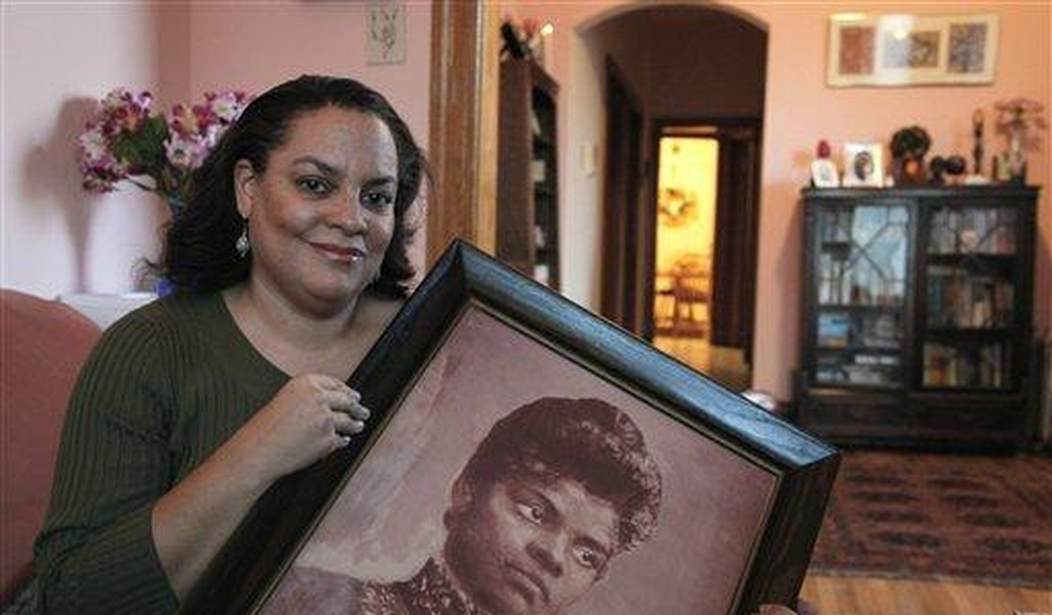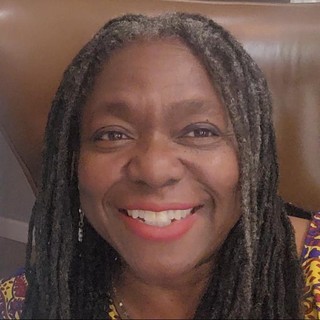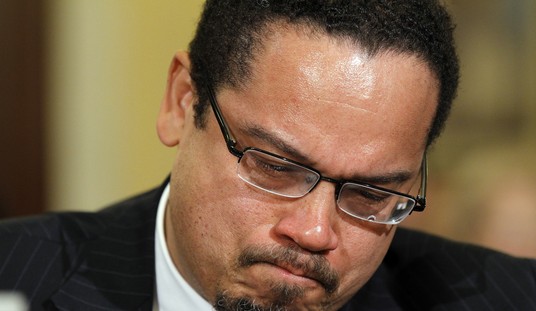It is February, and since I was knee-high to a duck, I have celebrated Black History Month in some fashion. I had a terrific instructor in middle school who taught Black History alongside American History; so unlike many—especially among Millennials and Zoomers—I received not only a weighty appreciation for the American experience, but how the story of my people interweaved and was pivotal to what makes our country great.
Carter G. Woodson, a Harvard historian who along with minister Jesse E. Moorland helped to spearhead a great and necessary discussion on the contributions of Blacks to the American fabric and way of life. What I lament is that that discussion fails to move beyond February unless there is something destructive happening in Black communities or when Democrats and the Left want to christen their chosen symbol of woke Blackness. Promoting a Kamala Harris, while ignoring a Condoleeza Rice. It’s a ridiculous game which diminishes us all.
Something that I also lament is how many of my Black History heroes have been co-opted by the Left. Look at what Democrats and the Left have done to the Rev. Dr. Martin Luther King, Jr. Some of the garbage you read has whole cloth removed his conservative focus or his dependence on God to help him spearhead and lead the Civil Rights movement.
The same with one of my personal heroes, Ida B. Wells-Barnett. For years Wells never received the prominence she deserves. Now that she is, its focus is cloaked in the language of the Left. Her great-granddaughter, Michelle Duster (pictured), recently released her novel: Ida B. The Queen, which dovetails Ida B. Wells’s story into what is happening in modern-day America.
I have not yet read the book, but I have no doubt it will lean toward social justice and Woke politics. Sadly, this is the hallmark of our time, and that is what is selling like hotcakes. This is the nature of what is happening with many of the giants of Black History—co-option by the Left. Rather than Wells’s powerful life being the center, her story is the latest prop for activism and feminism. Most internet biographies on her life gloss over and eliminate two facts: 1) Ida B. Wells was a Republican; 2) Ida B. Wells was an advocate for Black people maintaining their right to bear arms. I will briefly discuss these two aspects of her life.
So would Ida B. Wells pic.twitter.com/zQVuS3qo5Y
— Jennifer Oliver O'Connell, BA, MPW, Eata Bita Pi (@asthegirlturns) January 27, 2020
Ida Bell Wells was born July 16, 1862 in Holly Springs, Mississippi. Wells was born into slavery, but as you can see by the date, she was born during the last year of the Civil War. In 1863, the Emancipation Proclamation liberated Blacks in the slave states.
Once the war ended, Wells’s parents became politically active in Reconstruction Era politics and recognized that the first liberty to be protected was the liberty of the mind. Wells was well-educated, first at Shaw University (now Rust College). She was expelled because of a dispute with the university’s president.
Wells went to live with her grandmother in 1878, when she received news that a yellow fever epidemic had hit her hometown. The disease took the life of her parents and an infant brother. At only 16-years-old, Wells was left to raise her remaining brothers and sister. So, she convinced a school administrator that she was 18 in order to obtain a teaching position. Eventually, Wells moved her siblings to Memphis, Tennessee, where she continued to work as an educator, as well as continuing her own education during the summers at Fisk University in Nashville.
In 1883, on one of her travels between Memphis and Nashville, Wells was thrown off a Chesapeake and Ohio Railroad first-class train, but not after bruising the conductor as much as he bruised her. Wells-Barnett filed a lawsuit, not only against Chesapeake and Ohio, but several other railroad companies! She won a settlement, as much as a Black person could win in that day. As a result, many rail lines created a “separate but equal” category for their first-class cars. A phyric victory, but a victory nonetheless.
Wells activist reputation was set in stone after the lynching of her close friend Thomas Moss. Moss was a grocer who presented competition to the white-owned grocery concern. As many whites did in that day, and like the Left is doing to conservatives now, rather than actually compete, the white grocer sought to destroy Moss, and fomenting violence was always the preferred avenue.
Sounds very familiar.
Instances of violence and altercations between deputized white citizens against Black citizens resulted in the lynching of Moss, and two other men. Wells made it her life’s mission to expose the evils of lynching through editorial letters and her investment in a local Black paper, the Memphis Free Speech. When Wells was out of town in New York, the Ku Klux Klan burned down her presses and warned her not to return to Memphis.
Wells obliged in terms of moving her location, but her voice only became louder, and more prominent. Wells stayed in New York and joined T. Thomas Fortune’s paper, the New York Age. Wells increased her influence, gaining not only a national, but an international platform. Wells traveled to Great Britain many times during this period, and to this day she is a revered figure. In February 2019, a plaque was erected in the city of Birmingham, dedicated in Ida B. Wells honor.
Wells researched and wrote about the evils of lynching, how the South terrorized Black citizens through the production of lynch mobs, and how the United States government was complicit in allowing the practice to fester and grow. Wells used her gifts of pedagogy and research to elevate what is now considered pioneering investigative journalism. The University of North Carolina hosts the Ida B. Wells Society for Investigative Reporting, which encourages and fosters people of color in pursuing stories that elevate transparency, government accountability, and a more perfect union.
Wells’s published her well-sourced and documented evidence on the South’s lynching and abuse of Black citizens s in 1892’s Southern Horrors and in 1894’s A Red Record.
After her first overseas trip, Wells moved from New York to Chicago, where she worked with abolitionist and speaker Frederick Douglass and a local lawyer and editor, Ferdinand Barnett. The team produced an 81-page booklet about the exclusion of Black participants from most of the events around the 1893 Colombian Exposition. Wells married Ferdinand Barnett in 1895 and they had four children, along with Barnett’s two children from his first marriage. Wells also wrote for Barnett’s newspaper, the Chicago Conservator.
Really, Wells flies in the face of the tortured third-wave feminist movement, because she was a woman who did it all in a time when women were limited by not only skin color, but their station in life. Wells is a meaningful and powerful voice not only for her time, but for all time. She was a prominent Black female in an era of established racism and sexism, yet she managed to work in partnership with men and women of all races, while maintaining a marriage, raising children, and building a life.
In the book, Negroes and the Gun: The Black Tradition of Arms, Nicholas Johnson writes,
“Along with her even more incisive critique of lynch terror, Wells developed a keener sense of the necessity and value of defensive firearms. Celebrating the recent evidence of blacks defending themselves and preventing lynchings through armed self-defense in Jacksonville, Florida, and Paducah, Kentucky, she advanced her classic prescription for armed self-defense. ‘The lesson this teaches and which every Afro-American should ponder well, is that the Winchester rifle should have a place of honor in every black home.’ The more the Afro-American yields and cringes and begs, the more he is insulted, outraged and lynched.’ ”
One of the hallmarks of Wells’s gun rights advocacy was that she saw it as part and parcel of the Black man’s and woman’s exhibition of heroism and standing ones’ ground. As Shakespeare’s Hamlet said, “the readiness is all,” and Wells was of the mindset that Blacks should always be ready to face and confront any foe.
As a Republican and a female, Ida B. Wells was also a strong advocate of Civil Rights, and was a burr in the side of someone who I consider one of our most racist Presidents. In November of 1913, Wells led a coalition of Civil Rights leaders to meet with President Woodrow Wilson in the White House. Her goal: to protest Wilson’s segregationist policies and to present him with a petition signed by 20,000 complainants from 36 states.
Joe Biden took a page out of Woodrow Wilson’s playbook. When Wilson was running for office, he also sought out Black leaders to help him get elected. As Wells’s contemporary W.E.B. Du Bois wrote in the NAACP’s Crisis, Wilson had impressed them with his “big” progressive ideas, promises of giving blacks their fair share of federal jobs, and of dispensing with the vestiges of ‘Jim Crow’ insult.” If elected, Wilson promised, he would “be a President of the whole nation—to know no white or black, no North, South, East or West.”
Sound familiar? Just like President Unity Biden, once Wilson was elected, he not only kicked Blacks to the curb, but reinstituted and reinforced Jim Crow policies. Within months, the Treasury and Post Office, as well as the Bureau of Engraving and Printing had been mandated to have racially separate offices, lunch rooms and bathrooms for the first time since the Civil War. Diplomatic posts and other prominent positions traditionally reserved for Blacks were reduced in rank or removed altogether, while new applications to any government post now required a photograph, in order to ensure they were not giving a post to someone Black.
Reminder: When Ida B. Wells started her anti-lynching crusade, The New York Times called her a “slanderous and nasty-minded” person seeking “income” rather than “outcome.” 30 years later, the President and Congress were on her side. "Polite society" is a follower—we need leaders. pic.twitter.com/PxjM1Okazw
— Pete Davis 🌱 (@PeteDDavis) December 17, 2020
This is the same President who screened D.W. Griffiths, Birth of a Nation in the White House. Enough said.
The coalition was begged off by President Wilson, their requests ignored, and Wells was targeted by the administration. When Wells wanted to travel to Paris for the Peace Conference held at the end of World War I, she was denied. From a LitHub feature discussing Duster’s book:
“In the late 1910s, the Federal Bureau of Investigation updated its file tracking a woman who’d been born into slavery in Holly Springs, Mississippi. This second report, registered the year after her FBI file was first created, came with a decisive declaration about Ida B. Wells-Barnett:
‘We have on file quite a few reports from different cities, where she has addressed meetings of colored people and endeavored to impress upon them that they are a downtrodden race and that now is the time for them to demand and secure their proper position in the world. She is a very effective speaker and her influence among the colored race is well recognized.
‘I believe she is considered by all of the Intelligence officers as one of the most dangerous negro agitators, and it would seem that her case should be considered very carefully before she is given a passport to the Peace Conference.’
“The strongly worded letter worked. Ida, among several others, was denied the passport she would need to travel to the overseas conference that had been organized after the end of World War I. She believed African Americans deserved a representative at the Peace Conference in Paris, and that any written resolution should include a ‘racial equality clause.’ ”
Wells certainly did not let this keep her down, and she refused to back down. Her continued advocacy for racial equality, justice, and equal protections under the law was infused throughout her writings, speeches, and participation in organizations that furthered those aims. Wells was active in the suffrage movement, but because of her stance on lynching and her frequent confrontations with the very women who ignored the evils in order to obain the cooperation of Southern women, Wells was not given any prominence in the fight.
In 1913, Wells-Barnett organized the Alpha Suffrage League, an organization of Black women supporting women’s suffrage. Wells wanted to show that Black people did support women’s suffrage, knowing that other laws and practices that barred Black men from voting would also affect Black women. Wells also wanted to create the distinction between the national suffrage movement to spotlight their deliberate exclusion of Blacks.
“The way to right wrongs is to turn the light of truth upon them.” ― Ida B. Wells-Barnett
One of my personal heroes, and advocate for Black women's right to vote. #19thAmendment #Blackwomenvote #VotingRightsAct https://t.co/M97BUtxwXX
— Jennifer Oliver O'Connell, BA, MPW, Eata Bita Pi (@asthegirlturns) August 18, 2020
Wells was active in Chicago urban life and world politics until her death in 1931. Her legacy is embedded throughout Black History and the Civil Rights struggle, and it has only been in recent years that it is getting the attention it deserves. One of my goals is to encourage a holistic view of her life and work, and not just one that conveniently fits into Left wing activism.
Sign up for our VIP program to get access to premium content for members only! Use code “OCONNELL” for a discount!














